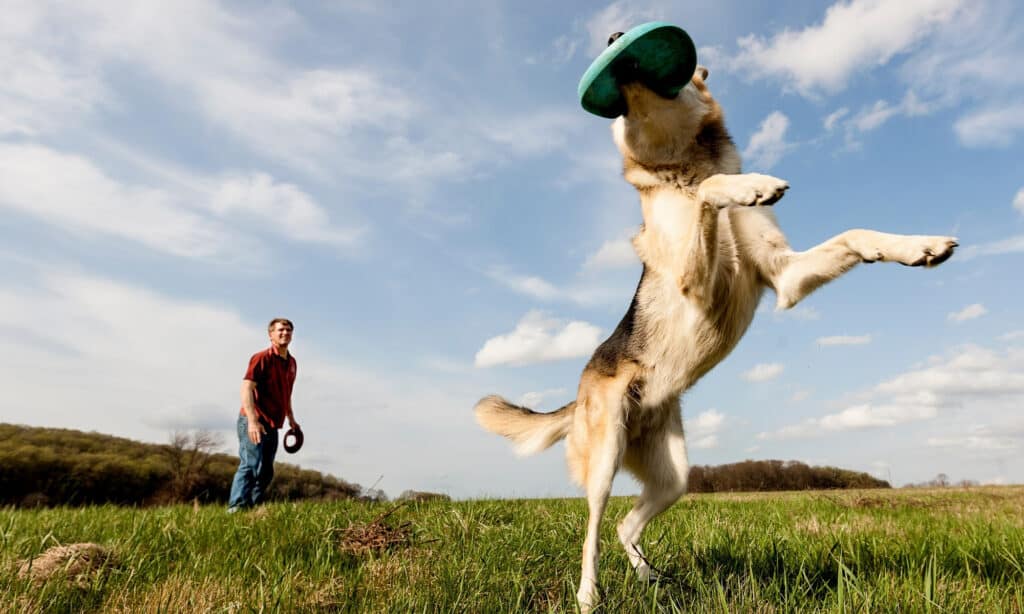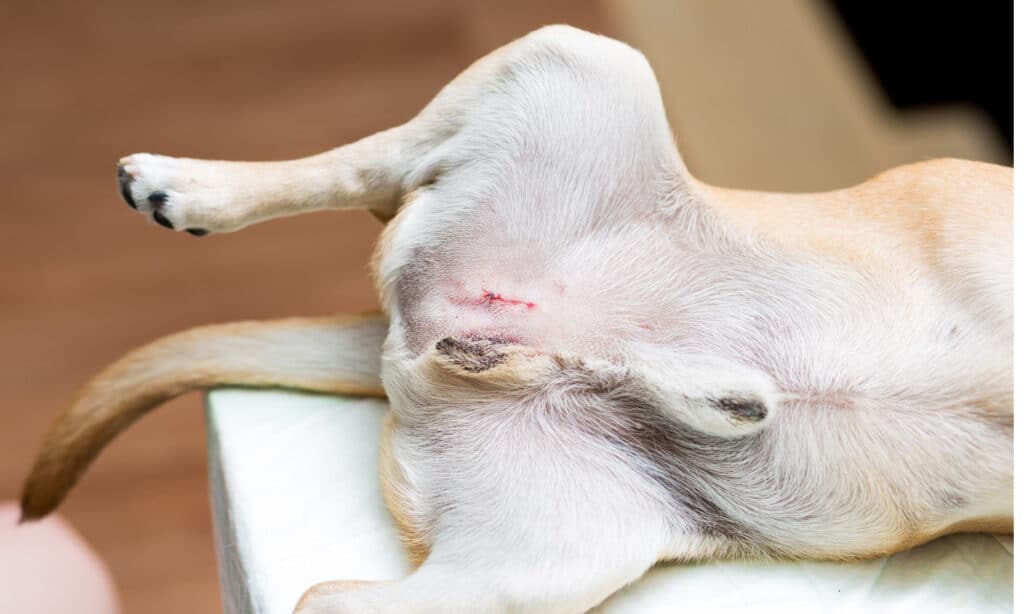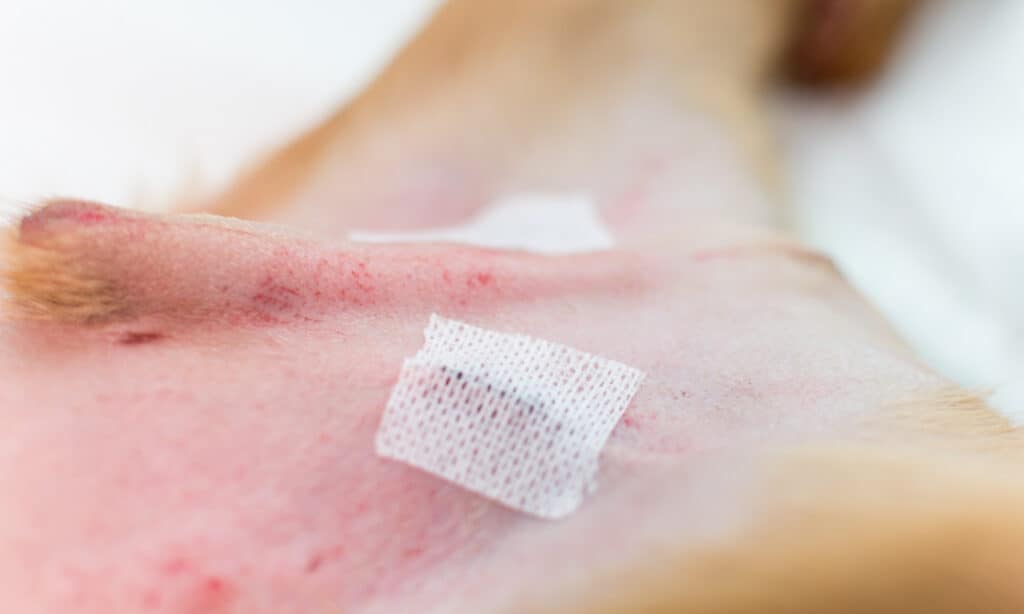The Basics of Neutering and Its Purpose
Neutering, also known as castration, is a surgical procedure that removes the testicles of male dogs. Typically, people perform the procedure to control reproduction or to curb unwanted behavioral issues associated with testosterone production.
The primary purpose of neutering is to prevent male dogs from impregnating females, but it can also help reduce aggressive behaviors and lower the risk of certain health problems.
There are both advantages and disadvantages to neutering a dog. Advantages include reduced risks of certain diseases, such as testicular cancer and prostate problems, while disadvantages include potential changes in behavior and other health risks.
One important thing to consider before deciding whether or not to neuter your dog is the effect it will have on testosterone levels. Testosterone plays an essential role in many aspects of male dog behavior and physiology. It’s crucial to understand how neutering affects testosterone production. But how long does it take for testosterone to be gone after neutering? The short answer is around six weeks, depending on may varying factors.

The Importance of Understanding the Effects of Neutering on Testosterone Levels
It’s essential to understand the effects that neutering has on testosterone levels because this hormone plays a crucial role in several aspects of male dog behavior and physiology. Testosterone helps regulate aggression, sexual behavior, and social interactions between dogs. When someone neuters a male dog, they remove his testicles, which eliminates his source for producing testosterone.
Without these organs producing testosterone anymore – at least not in significant quantities – you can expect some changes in your pet’s behavior. Pet owners need to understand how long it takes for testosterone to disappear after neutering because it helps them anticipate the behavioral changes their furry friend may undergo after the procedure.
Pet owners can make informed decisions about the medical care and behavior of their male dogs by knowing how long neutering takes to eliminate testosterone. Furthermore, this knowledge can help pet owners prepare for any necessary training or adjustments their pets may require after surgery.
The specific timeline for the decrease in testosterone levels varies depending on several factors, including age, breed, and size. However, by understanding how neutering affects testosterone levels and what behavioral changes may result from decreased hormones, you can help ensure that your furry friend stays happy and healthy.

Testosterone Production in Male Dogs
Explanation of How Testosterone is Produced in the Testes
The testes of male dogs produce a hormone called testosterone. It is an androgen, which means it promotes the development of male characteristics.
The production of testosterone begins at puberty, when the testes start to mature and produce sperm. The Leydig cells in the testes are responsible for producing testosterone.
Luteinizing hormone (LH), produced by the pituitary gland, stimulates them. The process of producing testosterone begins with the conversion of cholesterol into pregnenolone, which is then converted into progesterone.
Progesterone is then converted into androstenedione, which can be used to produce either estrogen or testosterone. In males, most of the androstenedione is converted into testosterone.
Role of Testosterone in Male Dog Behavior and Physiology
Testosterone plays a significant role in many aspects of male dog behavior and physiology. It affects not only reproductive function but also social behavior, aggression levels, and physical characteristics.
One key physiological effect of testosterone on male dogs is its influence on muscle mass and bone density. Higher levels of testosterone have been associated with increased muscle growth and strength as well as stronger bones.
Behaviorally, high levels of testosterone can lead to increased dominance displays. These include marking behaviors or territorial aggression toward other dogs or people. High levels can also cause an increase in sexual behavior such as mounting or excessive interest in mating.
However, it’s important to note that not all male dogs display these behaviors equally. Individual variation plays a big part in how much influence hormones like testosterone have on behavior. Testosterone’s effects on dogs’ physiology and behavior after neutering can be explained by understanding its role in their body. Keeping this information top-of-mind may help owners prepare for and manage any changes that occur.

Neutering and its Effects on Testosterone Levels
How Neutering Affects the Production of Testosterone
One of the primary effects of neutering on male dogs is a decrease in testosterone production. This is because neutering involves removing the testes, which are responsible for producing testosterone. Without testicles, the body can no longer produce as much testosterone as it did before.
Testosterone is important for male dogs because it affects a wide range of physiological and behavioral functions. The include muscle development, bone growth, aggression, and sexual behavior. Neutering typically alters these functions due to the decrease in testosterone levels.
Timeline for Decrease in Testosterone Levels After Neutering
The timeline for how long testosterone is gone after neutering varies depending on a number of factors. Generally speaking, neutered male dogs will experience a significant decrease in testosterone levels within the first few weeks. However, it can take several months for testosterone levels to fully stabilize after neutering.
During this time period, dogs may still exhibit some behavioral changes associated with decreased testosterone levels. Neutering age, size, breed, and individual differences impact how fast a dog adjusts and experiences testosterone level decline. Larger breeds typically take longer to adjust, while older dogs may also take longer. Additionally, some dogs may adjust more quickly than others due to individual variations.
In addition to affecting behavior and physiology, decreased testosterone levels can also have health benefits for male dogs who are prone to certain health problems such as prostatic disease and testicular cancer. Overall, while there are some potential downsides to neutering your male dog (such as reduced muscle mass), decreased aggression and other behavioral changes associated with decreased testosterone levels can make it a worthwhile option for many pet owners.

Factors that Affect the Timeline for Decrease in Testosterone Levels
Age at Which Dog is Neutered
The age at which a dog is neutered can have a significant impact on how long it takes for testosterone levels to decrease. The earlier a dog is neutered, the quicker the decrease in testosterone levels.
This is because the testes have not had as much time to develop and produce large amounts of testosterone. Dogs that are neutered before puberty may see their testosterone levels decrease within just a few days.
On the other hand, dogs that are neutered after puberty may take longer to see a decrease in their testosterone levels. This is because their testes have been producing testosterone for longer. It may take more time for the hormone to be completely metabolized and eliminated from their system.
Size and Breed of Dog
The size and breed of a dog can also affect how long it takes for their testosterone levels to decrease after being neutered. Larger dogs tend to have higher levels of testosterone than smaller dogs. It may take longer for their hormone levels to drop after surgery.
Certain breeds exhibit more sensitivity to changes in hormone levels than others. Neutering can cause behavior changes in specific breeds such as Golden Retrievers and Labrador Retrievers due to decreased hormone production.

Individual Variations
Just like with humans, there can be individual variations in how quickly dogs’ bodies metabolize hormones like testosterone. Some dogs may see a rapid decrease in hormone production within days or weeks of being neutered, while others may take several months. Additionally, factors such as overall health status and diet can also impact how quickly an individual dog’s body metabolizes hormones.
Dogs that are generally healthy with well-functioning organs may process hormones more efficiently than those with underlying health conditions. Several factors can impact how long it takes for a dog’s testosterone levels to decrease after neutering.
Age at the time of surgery, size and breed of dog, and individual variations all play a role in determining the timeline for decreased hormone production. However, regardless of these factors, neutering remains an effective way to reduce aggressive behavior and protect against certain health issues related to testosterone production.
Behavioral Changes Associated with Decreased Testosterone Levels
Decreased Aggression
One of the most well-known behavioral changes associated with neutering is a reduction in aggression. This is because testosterone plays a major role in male dogs’ aggressive behavior. By removing the source of this hormone, neutering can significantly decrease a dog’s tendency to show aggression towards other dogs or humans.
This can be especially helpful for dogs who have a history of aggressive behavior or who live in households with children or other animals. It’s important to note that neutering doesn’t guarantee that your dog will never show signs of aggression again.
Other factors, such as fear or anxiety, can still trigger aggressive responses even in neutered dogs. However, neutering can be an effective tool in managing and reducing aggression.

Reduced Marking Behavior
Another common behavioral change associated with decreased testosterone levels is a reduction in marking behavior. Male dogs use urine marking as a way to communicate their presence and territory to other dogs. Neutered male dogs are less likely to engage in this behavior because they no longer have the same level of testosterone driving them to mark every available surface.
While some neutered male dogs may still occasionally mark, it’s usually not as frequent or intense as before the surgery. Owners who are tired of dealing with urine stains and odors around their home can especially benefit from this.
Changes in Social Interactions
Neutering can also have an impact on how male dogs interact with other animals and people. Without high levels of testosterone driving them to compete for mates. Neutered male dogs may be more social and less territorial towards other animals they encounter on walks or at dog parks. In addition, some owners report that their neutered male dogs become more affectionate and cuddly after surgery.
The reduction in aggressive or territorial behavior, or the absence of distraction due to the desire to mate, may be causing this change in the dog. It’s important to note that not all neutered male dogs will experience these changes in social interactions.
Some dogs may still be wary of other animals or people, while others may become overly friendly or clingy. As with any behavioral change, it’s important to monitor your dog’s interactions and work with a professional trainer if necessary to address any issues.
Neutering can have a significant impact on male dogs’ behavior. This could include decreased aggression, reduced marking behavior, and changes in social interactions. While not all dogs will experience these changes in the same way, neutering can be an effective tool for managing and reducing certain types of unwanted behaviors. As always, it’s important to work closely with your veterinarian and a professional trainer to ensure that your dog is healthy and happy before and after surgery.

Physiological Changes Associated With Decreased Testosterone Levels
Reduced risk of prostatic disease
When veterinarians neuter a male dog, they remove its testicles, which prevents the dog from producing testosterone. This decrease in testosterone levels can have a significant impact on the dog’s health, particularly when it comes to the prostate gland. Studies have shown that neutered dogs have a greatly reduced risk of developing prostatic disease later in life, including benign prostatic hyperplasia (BPH) and prostatic cancer.
BPH is a common condition in unneutered male dogs that causes the prostate gland to enlarge and press on other organs. This can lead to uncomfortable symptoms like difficulty urinating and constipation.
In severe cases, BPH can even cause life-threatening complications like kidney damage or ruptured bladders. By removing the source of testosterone production (the testicles), neutering effectively eliminates the risk of developing this condition.
Reduced risk of testicular cancer
Another major advantage of neutering is that it greatly reduces a dog’s risk of developing testicular cancer. Unneutered male dogs commonly experience testicular tumors, whereas neutered male dogs rarely develop them.
In fact, after neutering, there is almost no chance for a dog to develop testicular cancer because there are no more testicles left for tumors to grow on. There are two main types of testicular tumors: seminomas and non-seminomas.
Seminomas tend to be slow-growing and may not metastasize (spread) as quickly as non-seminomas do. Non-seminomas tend to be more aggressive and can spread rapidly if not treated promptly.

Improved urinary tract health
Neutering also offers some benefits when it comes to urinary tract health by reducing the incidence of urinary tract infections (UTIs). UTIs are relatively common in male dogs. They can cause a range of symptoms like frequent urination, difficulty urinating, and blood in the urine. These infections can be painful and uncomfortable for dogs and can even lead to kidney damage if left untreated.
By reducing testosterone levels, neutering helps to prevent the prostate gland from becoming enlarged and pressing on other organs like the bladder. This reduces the likelihood of bacteria being trapped in the urinary tract and leading to an infection.
Reduced likelihood of perianal tumors
Perianal tumors, which are tumors that occur around the anus, are much less common in neutered male dogs than in intact males. The reason for this is not entirely clear, but it may have something to do with reduced exposure to certain hormones after neutering.
Perianal tumors can be benign or malignant, but they tend to be more aggressive than testicular tumors. It’s important to take your dog to a veterinarian as soon as possible if you notice a lump or bump around their anus or tail base.
Overall, neutering offers many benefits when it comes to male dog health. By removing testosterone production from the equation, neutering greatly reduces a dog’s risk of developing prostatic disease and testicular cancer. It also helps prevent urinary tract infections and perianal tumors while providing other health benefits like reducing aggression levels.
Summary of Key Points: How Long After Neutering is Testosterone Gone?
After neutering, the production of testosterone decreases significantly. Testosterone levels can take anywhere from a few weeks to a few months to decrease fully.
Several factors affect the timeline for decreasing testosterone levels after neutering. These age at which the dog is neutered, size and breed of dog, and individual variations. One key factor that affects the timeline for decreasing testosterone levels after neutering is age.
If you neuter a dog before puberty, around 6 months old, the dog’s testosterone production has not yet reached its peak. In such cases, the dog’s levels may drop faster compared to dogs that are neutered later in life.
Another factor that affects the timeline is size and breed of dog. Large breeds tend to have slower metabolisms than small breeds and may take longer for testosterone levels to decrease fully.
Additionally, some breeds may be more susceptible to changes in behavior or physiology after being neutered. Behavioral changes associated with decreased testosterone levels include reduced aggression and marking behavior.
With reduced aggression comes a decreased risk of fighting with other dogs or people as well as less inclination towards territorial behavior. Reduced marking behavior can also make living indoors with an owner much easier.
Physiological changes associated with decreased testosterone levels include a reduced risk of certain health problems such as prostatic disease and testicular cancer. Prostatic disease can be common in unneutered male dogs due to inflammation or enlargement of the prostate gland while testicular cancer occurs predominantly in intact male dogs.

Conclusion
Pet owners choose to neuter their pets for convenience or health reasons, but it’s crucial to comprehend that the procedure has potential risks. Changes in behavior or physiology are some of the risks that need to be considered when deciding whether or not to neuter a furry friend. Pet owners who are considering the procedure must understand how long testosterone takes to disappear after neutering.
The timeline for decreasing testosterone levels after neutering can vary based on several factors such as age, size and breed of dog, and individual variations. It’s also important to consider the behavioral and physiological changes associated with decreased testosterone levels when deciding whether or not to have a pet neutered.
~Lindsie
